Concrete floor treatment options refer to various methods and products to enhance concrete floors’ appearance, durability, and functionality. These treatments are commonly applied in residential, commercial, and industrial settings to transform plain, dull concrete into visually appealing, long-lasting surfaces. One popular option for concrete floor treatment is concrete staining. Staining involves applying a specialized chemical stain to the concrete surface, penetrating the material, and creating a permanent color change. This method offers various color options, allowing individuals to achieve a customized look. Concrete staining enhances the floor’s aesthetics and protects against stains, UV damage, and wear. It is a cost-effective solution in various areas, such as basements, garages, and retail spaces.
Concrete Floor Treatment Options
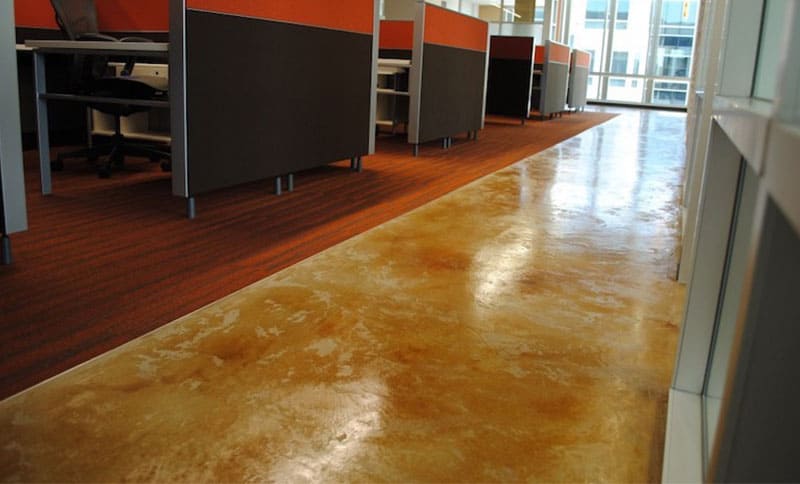
Another effective treatment option is concrete polishing. Polishing involves grinding the concrete surface with progressively finer diamond abrasives until a glossy, smooth finish is achieved. This process improves the floor’s appearance and increases its durability and resistance to abrasion. Polished concrete floors are highly reflective, which helps enhance lighting in interior spaces and reduces the need for additional lighting fixtures. They are also easy to clean and maintain, making them popular in high-traffic areas like warehouses, showrooms, and offices.
Epoxy coating is another popular treatment for concrete floors. Epoxy is a two-part liquid mixture that forms a hard, durable, and chemical-resistant coating when applied to the concrete surface. This treatment option offers numerous advantages, including a seamless and smooth finish, enhanced durability, resistance to stains, and ease of cleaning. Epoxy coatings are available in various colors and can be customized with decorative flakes or patterns to achieve a unique design. They are commonly used in garages, kitchens, laboratories, and industrial facilities where a robust and visually appealing floor is required.
Concrete floor treatment options provide a range of choices to enhance concrete surfaces’ appearance, durability, and functionality. Concrete staining, polishing, and epoxy coating are just a few examples of the treatments available. These options offer different benefits, such as improved aesthetics, increased durability, staining resistance, and ease of maintenance. The treatment choice depends on the specific requirements and preferences of the space in question, whether a residential, commercial, or industrial setting.
Which Concrete Floor Coating Option Should You Choose? Guide To
5 Best Concrete Floor Finishes That Look High-End
Best Indoor Concrete Floor Finishes
6 Best Concrete Floor Finishes for Indoor Spaces – Concrete Network
How to seal and polish concrete floors – Ecohome
Best Indoor Concrete Floor Finishes
Polished Concrete Floors Creative Maintenance Solutions
5 Best Concrete Floor Finishes That Look High-End
Alternative Finishes for Interior Concrete Floors – Concrete Decor
Best Garage Floor Coating of 2022 – This Old House
Best Application For Indoor Concrete Floor Finishes Concrete
Related Posts:
- Applying Concrete Floor Paint
- Non Slip Concrete Floor Sealer
- How To Paint Concrete Garage Floor
- Outdoor Concrete Floor Ideas
- Concrete Floor Covering Ideas
- Cracks In Polished Concrete Floors
- Drylok Concrete Floor Paint Colors
- Polished Concrete Floor Thickness
- Residential Stained Concrete Floors
- Cheap Concrete Floor Finishes
Concrete Floor Treatment Options
Concrete floors are one of the most popular and versatile choices for flooring in homes, offices, and other commercial spaces. But the surface of concrete can be susceptible to wear, staining, and cracking over time. To ensure that your concrete floor looks its best and lasts longer, it’s important to select the right treatment option. In this article, we will explore the various treatment options available for concrete floors, including sealing, staining, grinding, and polishing.
Sealing Concrete Floors
A concrete sealer is a liquid applied to the surface of concrete to help prevent staining, cracking and wear. Sealers are available in both solvent-based and water-based formulas, but water-based sealers are generally preferred due to their lower VOC (Volatile Organic Compound) emissions. Sealers also provide a glossy finish that can help enhance the look of your concrete floor.
When applying a sealer to a concrete floor, it’s important to make sure that the surface is clean and free of dirt and debris before application. Once the sealer is applied, it’s important to allow it to dry completely before walking on the surface or applying any additional treatments.
Staining Concrete Floors
Concrete staining is a popular option for transforming the look of a concrete floor without having to replace it entirely. Staining involves applying a special solution to the surface of the concrete that reacts chemically with the minerals in the concrete to create a unique color or pattern. The stain can be applied in many different ways, including by hand or with a sprayer.
Stains can be used to create intricate patterns or simply enhance the existing color of the concrete. Stains can also be used to create a more aged or distressed look. To ensure that your stained floor looks its best, it’s important to clean the surface thoroughly before application and allow ample time for drying before walking on the surface or applying any additional treatments.
Grinding Concrete Floors
Concrete grinding is an effective way to prepare a concrete floor for other treatments such as staining or sealing. Grinding involves using a specialized tool to remove any imperfections from the surface of the concrete such as uneven patches, cracks, or bumps. The grinding process can also be used to level out high spots or create a smooth finish on an uneven surface.
Grinding is often done prior to staining, sealing or polishing a concrete floor in order to ensure that these treatments are applied evenly across the entire surface. Grinding can also be done after these treatments have been applied in order to create an even sheen across the entire floor.
Polishing Concrete Floors
Polishing is another popular treatment option for concrete floors. Polishing involves using specialized tools and abrasives to buff out imperfections on the surface of the concrete and create a smooth finish. This process can also be used to bring out existing colors in the concrete or enhance existing patterns on the surface.
Polishing is often done after sealing in order to achieve a high-gloss finish that helps protect against staining and wear while also enhancing the overall look of your floor. It’s important to note that polishing should only be done after you have sealed and allowed ample time for drying before walking on or applying any additional treatments.
FAQs About Concrete Floor Treatment Options
Q: What is the best way to clean a stained concrete floor?
A: The best way to clean a stained concrete floor is with mild soap and warm water. Avoid using harsh chemicals or abrasive scrubbing pads as these could damage or remove the stain from your floor. For tougher stains, you may need to use an appropriate cleaner specifically designed for cleaning stained concrete floors.
Q: How often should I reseal my concrete floor?
A: The frequency at which you need to reseal your concrete floor depends on how heavily it gets trafficked and how well it was sealed initially. Generally speaking, you should reseal your floor every 1-3 years depending on how heavily it gets used.
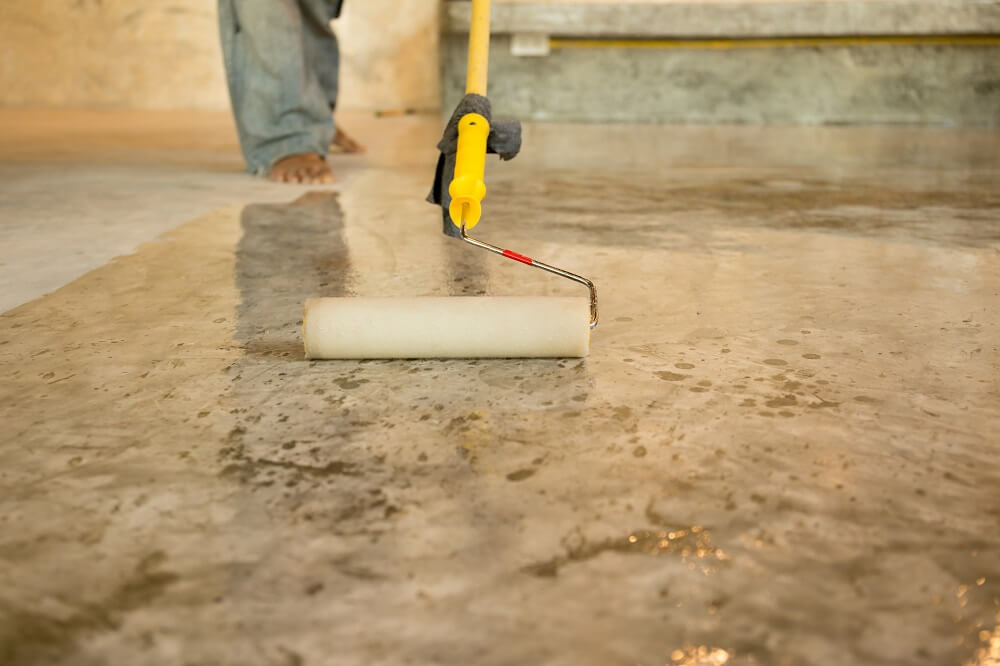
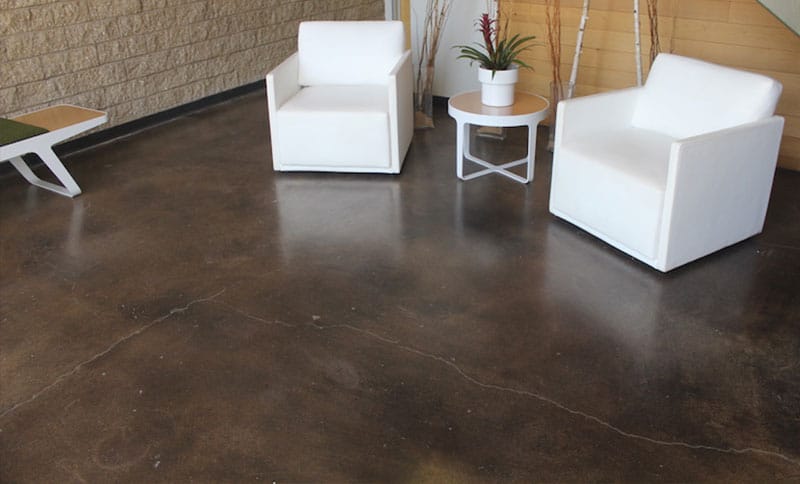
:max_bytes(150000):strip_icc()/epoxy-garage-floor-3-56a2fc725f9b58b7d0cffd4b.jpg)
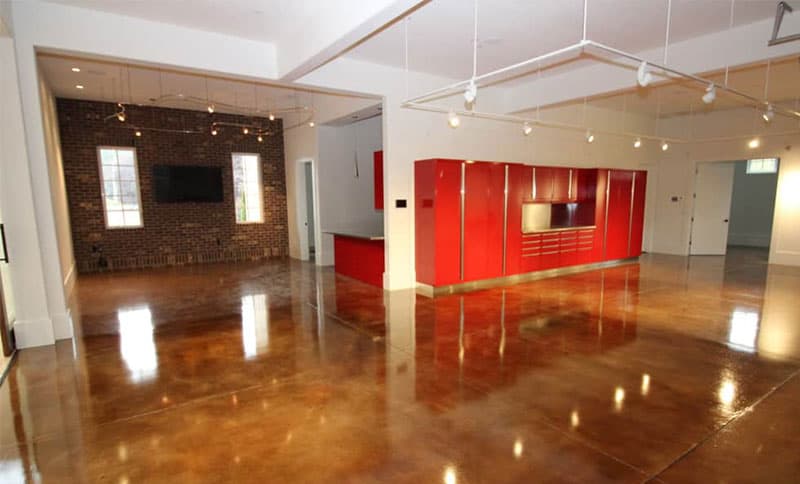

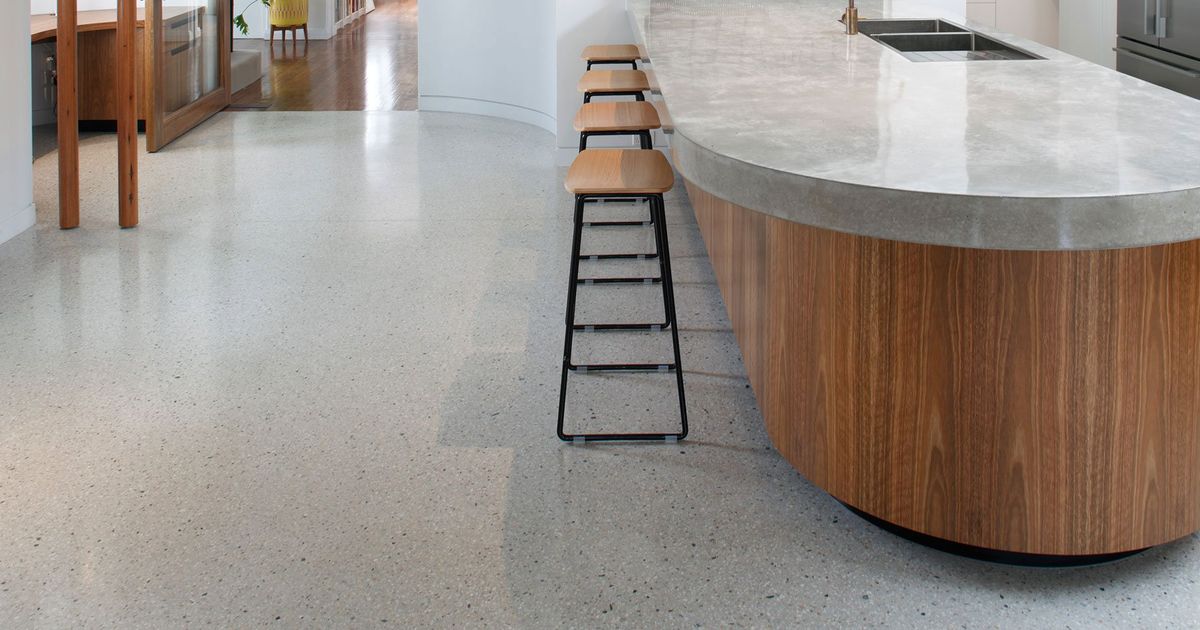
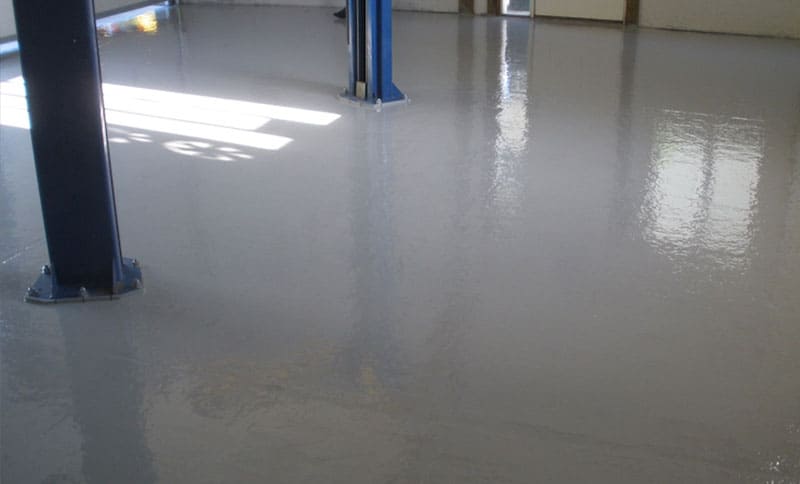

:max_bytes(150000):strip_icc()/picture-showing-contemporary-decoration-pieces-in-a-room-160641734-d5d2012f22a442bda97d0a630df83900.jpg)
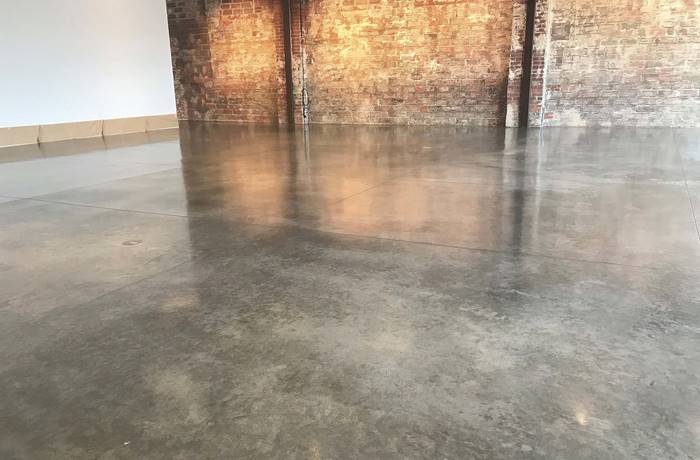
/cdn.vox-cdn.com/uploads/chorus_asset/file/22308892/1120_FEA_Idea_House_Fairfield_Farmhouse_08142020NR_0078_v3.jpg)
